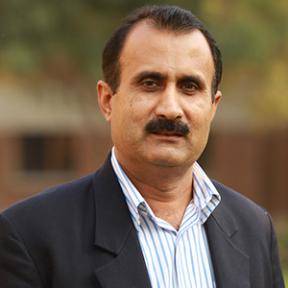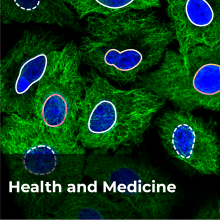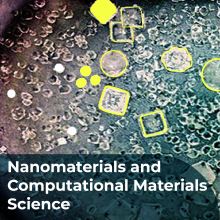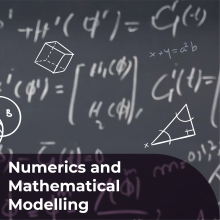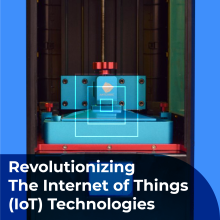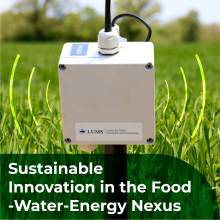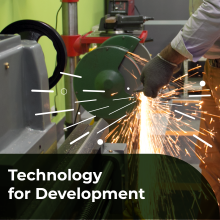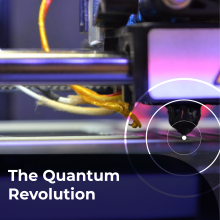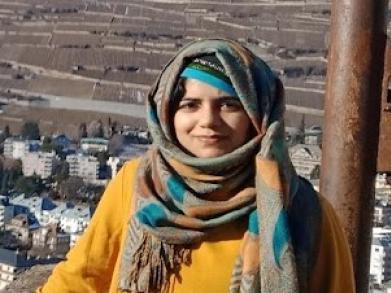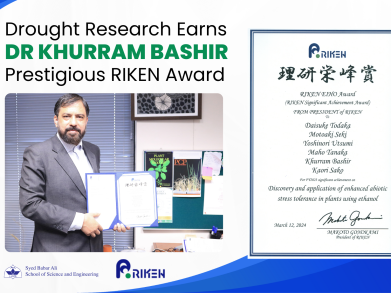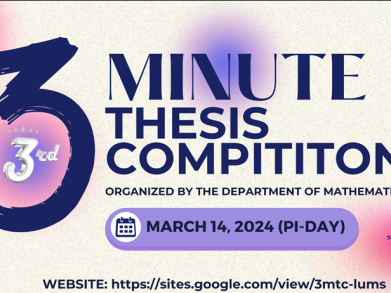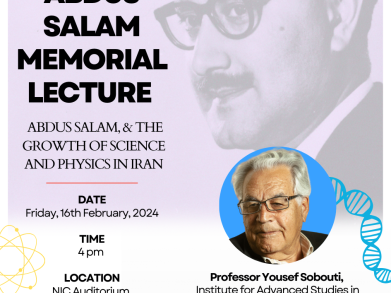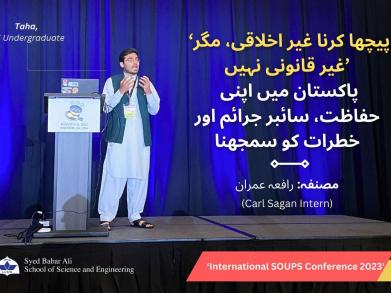Syed Babar Ali School of
Science and Engineering
Syed Babar Ali School of Science and Engineering
Syed Babar Ali School of Science and Engineering (SBASSE) at LUMS is the first private research school of science and engineering in Pakistan. In higher education, the term research school refers to a model of teaching and scholarship practised by some of the best institutions in the world where the primary function of the university is to create and disseminate new knowledge. SBASSE has consciously modelled itself along the lines of the world’s top research schools and has a highly qualified faculty to accomplish its mission. The hallmark of SBASSE is its no-boundaries philosophy, which encourages cross-disciplinary collaborations not only between various disciplines at SBASSE but also those offered by other Schools at LUMS.
A Different Kind of
Science and Engineering School
in Pakistan
300,000
Square feet of lab and
classroom learning space
70+
Dedicated labs for research,
teaching and support
Accredited by
PEC and NCEAC
Choose your path

Science for Pakistan
Contribution in Science and Technology by the researchers at SBASSE has an impact on the future development of Science in Pakistan.

Meet our Faculty
At SBASSE our faculty members share the boundaries of their life experiences and interests that foster a dynamic learning environment on campus.
Research and Impact
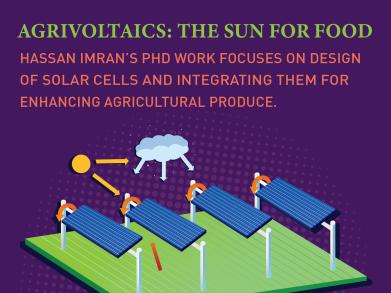
Dr. Nauman Zaffar Butt in the Electrical Engineering department leads…

Dr. Nauman Zaffar Butt in the Electrical Engineering department leads our efforts on photovoltaics which has now crossed over into the realm of agriculture, to produce the budding field of agrivoltaics. Powering agricultural farms through solar energy requires creative designs in both the solar cells as well as how solar cells will be integrated into a solar system that can power agri-farms.
Dr. Butt's PhD student Hassan Imran has now produced an amazing body of work that helps achieve both of these tasks. Novel materials, novel designs of the heterofacial structure of solar cells and employing two-dimensional layers of graphene or carbon nano-tubes can boost the performance of solar cells, achieving almost thermodynamically maximum efficiencies. Creative ways to interface silicon based and organic-inorganic solar cell technologies helps achieve the best of both worlds.
Finally, Hassan has mathematically modeled the role of soil and orientation of solar panels, in achieving high efficiency crop yield from solar enhanced farmlands. This work has immense implications for the country which calls for innovative solutions to address critical problems at the food-energy-water confluence.
The quality of his work is evidenced by the four articles published in the world's leading journal on this topic:
- The IEEE Transactions on Electron Devices [here, here, here and here],
- The IEEE Journal of Photovoltaics [here],
- Solar Energy [here] and
- Renewable Energy [here],
- along with several conference proceedings.
The Water-Food-Energy nexus remains one of the six forefront areas being pursued at the Syed Babar Ali School of Science and Engineering.
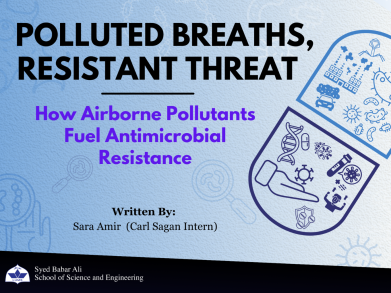
In the hustle and bustle of Pakistan's…
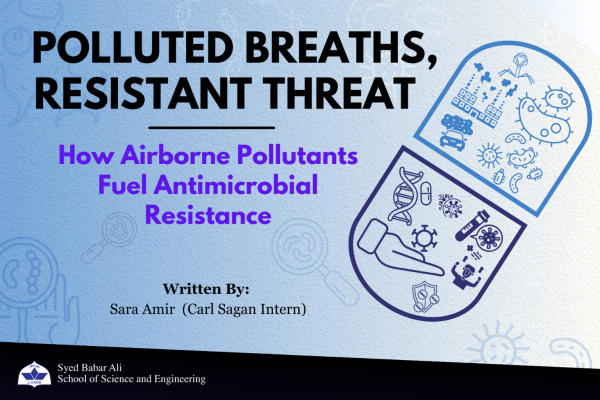
In the hustle and bustle of Pakistan's healthcare landscape, a silent war is raging, and it's not against a visible foe but rather microscopic troublemakers – antibiotic-resistant microbes.
Antibiotic resistance poses a growing threat to health globally. According to a report by Fleming on Antimicrobial Consumption by 700,000 individuals each year lose their lives to resistant infections. In Pakistan, this issue is exacerbated by a lack of antimicrobial stewardship in hospitals, indiscriminate antibiotic prescriptions, and a surge in respiratory diseases due to polluted air.
Healthcare providers, lacking the much-needed antimicrobial stewardship, are caught in a loop of overreliance on intravenous and oral antimicrobials. It's a revelation that makes you wonder – are we unintentionally brewing a storm of resistance right under our noses?
There's a surprising twist in the narrative of antimicrobial resistance. The air we breathe carries pollutants and potentially acts as a highway for antibiotic-resistant genes. A study by Lancet, a reputed medical journal, reveals a compelling connection between PM 2.5 air pollution and antibiotic resistance. PM 2.5 refers to particulate matter with a diameter of 2.5 micrometers or smaller. As these particles carry bacterial genomic material, inhaling them contributes to incorporating resistant genes into opportunistic pathogens, exacerbating antibiotic resistance.
Analyzing global data from 116 countries between 2000 and 2018, the study estimated that a 10% rise in annual PM 2.5 led to a 1.1% increase in aggregate antibiotic resistance, resulting in approximately 43,654 premature deaths. Regional variations highlighted potential significant increases in antibiotic resistance in Africa and Asia. Notably, for Pakistan, a 10% PM 2.5 elevation was predicted to increase antibiotic resistance by 2.6%.
To tackle this, Dr. Shaper Mirza has been at the forefront of addressing antibiotic resistance in Pakistan. She is actively engaged in projects addressing different facets of antibiotic resistance and stewardship. She participated in development of the first National Action Plan for Antimicrobial Resistance in Pakistan. The initiative involves identifying rates of antimicrobial resistance from a One-Health perspective in Pakistan. This was the first effort of its kind which furnished sufficient data suggesting resistance across all sectors which include human health, animal health and agriculture. The investigation and its outcome led to the development of National Action Plan for AMR in Pakistan. The National Action Plan was implemented in Pakistan in 2017 and currently there are 43 sentinel sites collecting and reporting data on antimicrobial resistance strains. The Situation analysis for National Action Plan was done in collaboration with Global Alliance for Antimicrobial Resistance Partnerships (GARP). The GARP consortium, comprising seven countries, collaborates to exchange knowledge, build capacity, and develop antimicrobial stewardship guidelines.
To improve on stewardship practices, Dr Mirza in collaboration with Pakistan Kidney and Liver Institute (PKLI) developed two courses on adult and pediatric antimicrobial stewardship. Both courses were very well attended both by physicians and basic science researchers working in the field of antimicrobial resistance.
Tips from the experts:
As Pakistan grapples with the dual challenges of smog and antibiotic resistance, practical steps can make a difference. When the air is thick with smog, consider preventive measures like wearing masks, frequent nasal cleaning to minimize pollutant exposure and emphasizing a high-protein diet to bolster immune systems.
While smog-induced respiratory symptoms might initially prompt concern, antibiotics are specifically designed to combat bacterial infections, not viral foes. Viruses, often the culprits behind seasonal respiratory ailments, don't respond to antibiotics. Therefore, before rushing to antibiotics, look for telltale signs of a bacterial infection – persistent high fever, green or discolored mucus, and specific radiological findings in chest X-rays. If symptoms persist, consult a healthcare professional who can guide you on the most effective and responsible course of action. By adopting these practices and following World Health Organization’s (WHO) guidelines for antibiotic usage, we protect ourselves from the smog's impact and contribute to the collective effort to preserve the effectiveness of antibiotics for when they're truly needed.
After all, a breath of fresh air should be just that – fresh and invigorating!
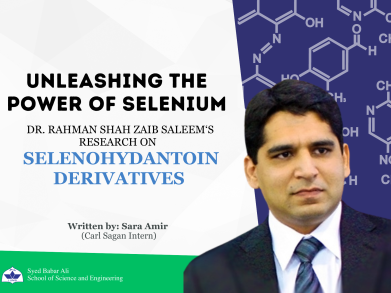
Selenium is a vital trace element that plays…
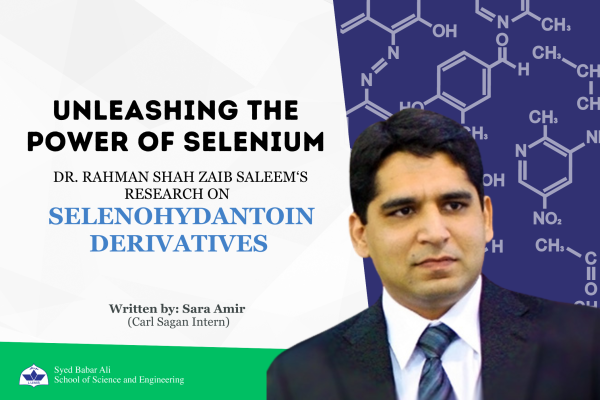
Selenium is a vital trace element that plays a crucial role in our health, influencing various biochemical pathways due to its antioxidant properties. In nature, it often finds its way to our plates through foods like tuna, enriching our bodies with its antioxidant prowess.
The intricate relationship between Selenium and antioxidant properties has been extensively studied by researchers in the field, including Dr. Rahman Shah Zaib Saleem from the Department of Chemistry and Chemical Engineering at SBASSE, who is one of the contributors to a paper on Selenium derivatives. The paper was published after Dr. Rahman’s DAAD (Deutscher Akademischer Austauschdienst) scholarship visit to Germany in 2019 in collaboration with eleven international researchers, including Dr Rama Alhasan, Dr. Guilherme M. Martins, Dr. Pedro P. de Castro, Dr. Claus Jacob.
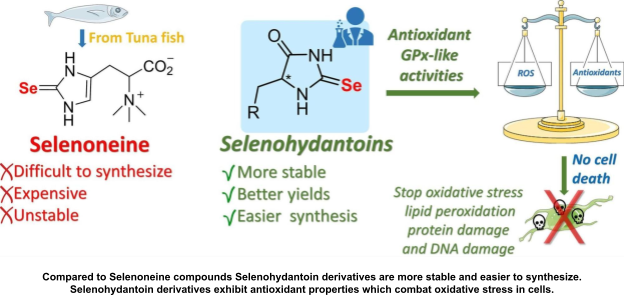
Selenium, acting as an antioxidant powerhouse, takes center stage in this study. Nature carries very few selenium containing organic compounds, Selenoneine being one of those. In this work, the team has worked on the preparation of novel organoselenium compounds. The research zeroes in on Selenohydantoin derivatives, synthetic compounds inspired by Selenoneine. These derivatives, with their fascinating range of pharmacological applications, hold the potential to serve not just as antioxidants but as versatile agents with capabilities spanning anti-inflammatory, anticancer, and antiplatelet realms. Through Selenocysteine enzymes like Glutathione Peroxidase, it acts as a powerful defender, effectively reducing peroxides to explore their potential in combating oxidative stress, a state where an imbalance occurs between the production of free radicals and the body's ability to neutralize them.
Using a unique synthetic method, the researchers synthesized Selenohydantoin molecules, paving the way for a comprehensive evaluation of their antioxidant capabilities. The study employed classical radical scavenging and metal-reducing techniques to unravel the true potential of these synthetic compounds. Cytocompatibility assays demonstrated that the Selenohydantoin derivatives were not only effective antioxidants but also non-toxic to primary human aortic smooth muscle cells. Cytocompatibility refers to the compatibility of a substance with living cells, ensuring that these compounds do not harm or disrupt normal cell function, a promising aspect for further biological evaluations.
Among the synthesized compounds, those adorned with trifluoro-methyl (-CF3) and chlorine (-Cl) substituents emerged as molecules displaying noteworthy antioxidant activities. Dr. Rahman's work highlights these compounds as potential candidates for future biological studies, offering hope for innovative therapies against chronic diseases. This research focuses not only on synthetic compounds but also on the broader context of organoselenium compounds in living organisms. Looking into the future a larger picture emerges - synthesis of Selenium-based compounds could play a crucial role in developing novel and effective prevention and treatments for diseases such as cancer, cardiovascular diseases, cystic fibrosis and rheumatoid arthritis.
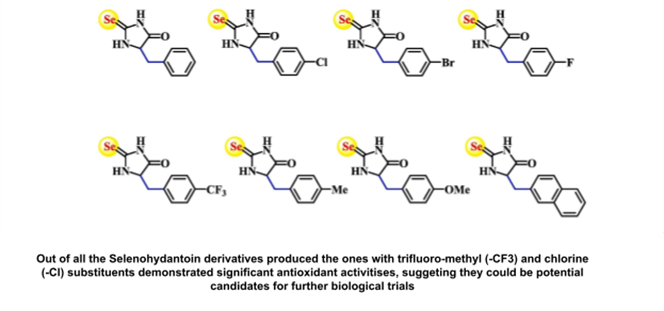
Dr. Rahman has recently been honored with another DAAD (Deutscher Akademischer Austauschdienst) scholarship grant by the German Academic Exchange Service. Through the scholarship Dr. Rahman and his research team will delve into the study of various signaling proteins and kinases, with a particular focus on the innovative molecule known as Proteolysis Targeting Chimeras (PROTACs). To learn more about Dr. Saleem's cutting-edge research and the potential impact of PROTACs on cancer treatment, follow this link.
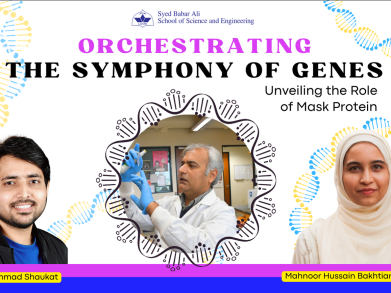
Picture a grand orchestra, with each…

Picture a grand orchestra, with each musician playing a crucial role in creating a harmonious symphony. In a similar vein, researchers at the Department of Biology at SBASSE, LUMS, have uncovered a key 'conductor' in the biological orchestra of gene regulation controlling cell fates – the Mask protein. Just like a conductor leads an orchestra, the Mask protein in fruit flies directs the activity of cell fate specific genes, ensuring they play their parts at the right times.
Research led by Ammad Shaukat and Mahnoor Hussain Bakhtiari, as the first authors under the supervision of Dr Muhammad Tariq, has been published in the prestigious journal Developmental Biology. Their study reveals that the Mask protein in fruit flies shares functional traits with the Trithorax group (trxG) proteins. Unlike the Polycomb group (PcG) proteins, which silence gene expression, trxG proteins play a pivotal role in sustaining the active state of genes, ensuring their continuous and proper expression.
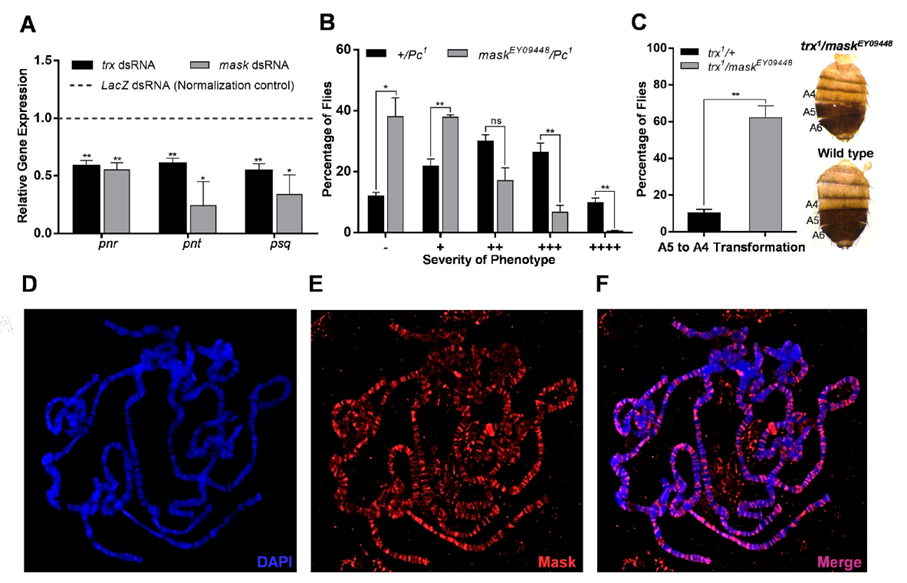
The study essentially explores how Mask operates at the molecular level. In every cell, genes are constantly being turned on and off, a process critical for proper functioning. Mask plays a role similar to a switch, helping to keep certain genes in the 'on' position. This is especially important during an organism's development, where precise gene activity patterns are essential for normal growth and formation of different cell types.
The research team found that Mask binds to areas in chromosomes marked by H3K27ac, a chemical tag indicating active gene regions. When Mask levels were reduced, these active regions showed changes in H3K27ac, leading to alterations in gene expression that are crucial for the development and identity of cells. They have also discovered that Mask counteracts repression by the PcG to ensure activation of cell type specific genes which are linked to maintenance of cell fates.
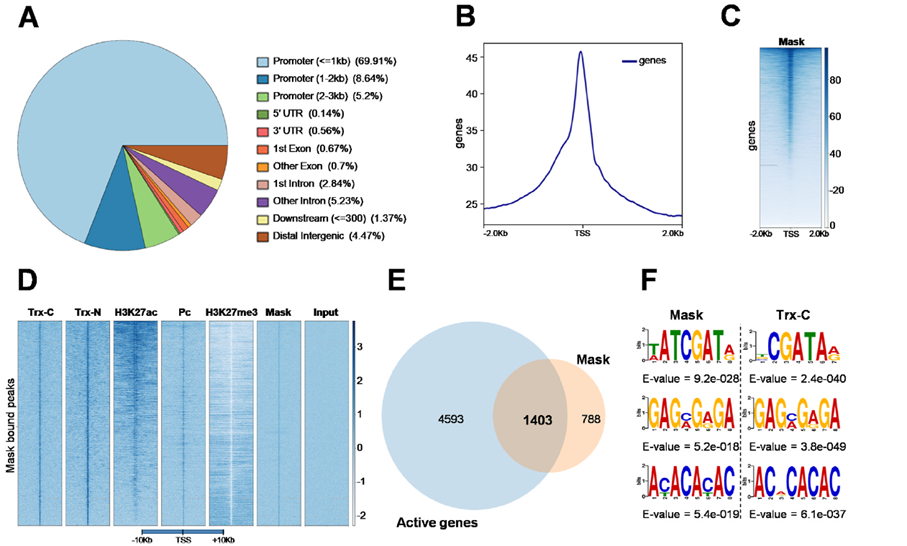
By examining fruit flies, a common model organism in genetics, the researchers identified that Mask interacts with specific sites in chromosomes where other trxG proteins are also present. When the Mask is not present, or its levels are altered, the normal pattern of gene activity is disrupted, leading to developmental abnormalities. Since Mask belongs to a specific class of proteins known as cell signaling factors, the study by Tariq Lab opens a new avenue that may help link cell signaling and cell fate maintenance in future.
This discovery is akin to finding a new way to understand and potentially direct the biological orchestra in humans. It opens possibilities for new treatments for diseases, such as developmental disorders and cancers, where the genetic symphony goes awry. The conservation of this mechanism in flies and mammals suggests that the role of Mask may be a universal theme in the biological orchestras across species.
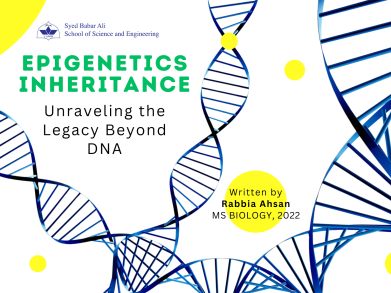
"For neither inherited genes nor…
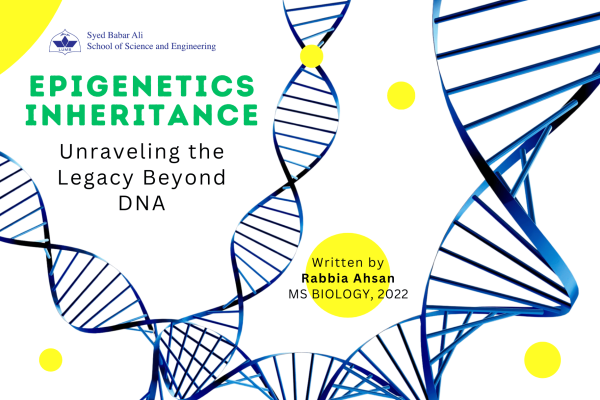
"For neither inherited genes nor environmental factors alone can account for the full range of variations seen in human health and disease." - Randy Jirtle, Epigenetics Pioneer
For many years, inheritance was synonymous with DNA, the genetic blueprint passed down from generation to generation. However, emerging research in the field of epigenetics has revealed an additional layer of inheritance that goes beyond the DNA sequence itself. In his groundbreaking book, "Epigenetics: How the Environment Shapes Our Genes," Richard C. Francis writes, "Epigenetics offers a new perspective on the nature-versus-nurture debate, suggesting that it is not just our genes but how our genes are regulated that matters."
In other words, epigenetics shows that both our genetic makeup and the environmental factors that influence gene expression are equally important in shaping who we are and how we develop. It emphasizes the dynamic interplay between our genes and the environment, challenging the notion that genetics alone dictates our destiny.
Epigenetic modifications, including DNA methylation, histone modifications, and non-coding RNAs, are crucial in regulating gene expression patterns without altering the DNA sequence. Recent studies have shown that these modifications can be transmitted from parents to offspring, potentially influencing phenotypic traits and disease susceptibility across multiple generations. In his seminal paper, Conrad Waddington, the father of epigenetics, described the epigenetic landscape as "the interplay of the environment and genes, a dance influenced by chance."
Epigenetic marks can be transmitted not only to the immediate offspring but also across several generations, resulting in transgenerational epigenetic inheritance. Research by Eric Miska and colleagues at the University of Cambridge demonstrated that small RNA molecules, called small interfering RNAs (siRNAs), can be inherited and affect gene expression in future generations.
As Dr. Michael Skinner, a pioneer in transgenerational epigenetic research, remarks, "Epigenetic inheritance challenges the traditional notion of Darwinian evolution."
Various environmental factors, such as diet, stress, and exposure to toxins can influence epigenetic modifications. Studies on the Dutch Hunger Winter, a period of famine during World War II, revealed transgenerational effects on the health of subsequent generations. According to Dr. Moshe Szyf, an epigenetics researcher, "Environmental influences can leave a lasting imprint on our genes, affecting not only our own health but also that of future generations."
Epigenetics and Evolution:
A Paradigm Shift
Imagine a world where diseases can be prevented, treated, or even reversed by targeting the intricate web of epigenetic modifications. Envision a future where we unravel the mysteries of transgenerational inheritance, unlocking the potential to create healthier generations through the optimization of environmental factors.
Epigenetic inheritance introduces a new perspective on the mechanisms of evolutionary change. Researchers have observed rapid phenotypic variation through epigenetic modifications in response to environmental stimuli. In their book "The Epigenetic Revolution," Nessa Carey and Randy Jirtle explain how epigenetic changes can facilitate adaptation and survival in fluctuating environments. Imagine a world where diseases can be prevented, treated, or even reversed by targeting the intricate web of epigenetic modifications. Envision a future where we unravel the mysteries of transgenerational inheritance, unlocking the potential to create healthier generations through the optimization of environmental factors. Epigenetic inheritance introduces a new perspective on the mechanisms of evolutionary change. Researchers have observed rapid phenotypic variation through epigenetic modifications in response to environmental stimuli. In their book "The Epigenetic Revolution," Nessa Carey and Randy Jirtle explain how epigenetic changes can facilitate adaptation and survival in fluctuating environments.
We are finally starting to unravel the missing link between nature and nuture; how our environment talks to us, sometimes forever. - Nessa Carey, The Epigenetics Revolution (2012)
With epigenetics as our guiding light, we embark on an extraordinary journey toward a future where we can rewrite the narrative of our genes and sculpt a healthier, brighter world for generations to come. It is a path that leads us to personalized medicine, disease prevention, and the realization of human potential. The study of epigenetics holds the promise of unlocking new avenues for improving human health and understanding the intricate interplay between genetics and the environment. As we delve deeper into the complexities of epigenetic inheritance and evolutionary dynamics, we move closer to harnessing the full potential of our genetic legacy.
Francis, R.C. (2011). Epigenetics: How the Environment Shapes Our Genes. W.W. Norton & Company.
Carey, N. (2012). The Epigenetic Revolution. Columbia University Press.
Waddington, C.H. (1942). The Epigenotype. Endeavour, 1(1), 18-20.
Miska, E.A. et al. (2008). Germ-line Inheritance of Uncapped Telomeres in Caenorhabditis elegans. Proceedings of the National Academy of Sciences, 105(19), 7103-7106.
Perlmutter, D. (2015). Brain Maker: The Power of Gut Microbes to Heal and Protect Your Brain – for Life. Little, Brown Spark.
Jablonka, E. and Lamb, M.J. (2014). Evolution in Four Dimensions: Genetic, Epigenetic, Behavioral, and Symbolic Variation in the History of Life. The MIT Press.
Redwood, D. (2012). Epigenetics: The Potential for Chiropractic Care to Influence Gene Expression. Journal of Manipulative and Physiological Therapeutics, 35(6), 409-415.
Church, G. (2019). Regenesis: How Synthetic Biology Will Reinvent Nature and Ourselves. Basic Books.
Graduate Theses
The Particle
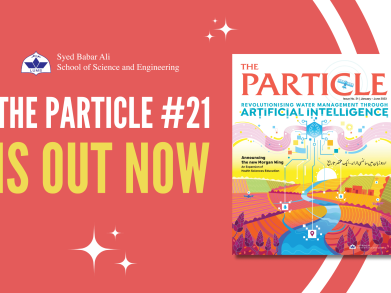
The Particle
A Science magazine with research and science stories from SBASSE.
Please click here to read the magazine: Issue 21
Science Stories
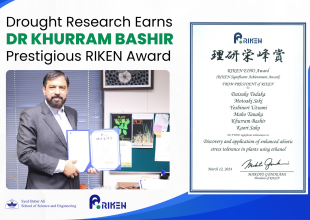
RIKEN, Japan's largest comprehensive research institution renowned for high-quality research in a diverse range of scientific disciplines, has conferred the RIKEN EIHO (Significant Achievement) Award 2024 to Dr Khurram Bashir for his “Groundbreaking Research on Enhanced Abiotic Stress Tolerance in Plants Using Ethanol”.
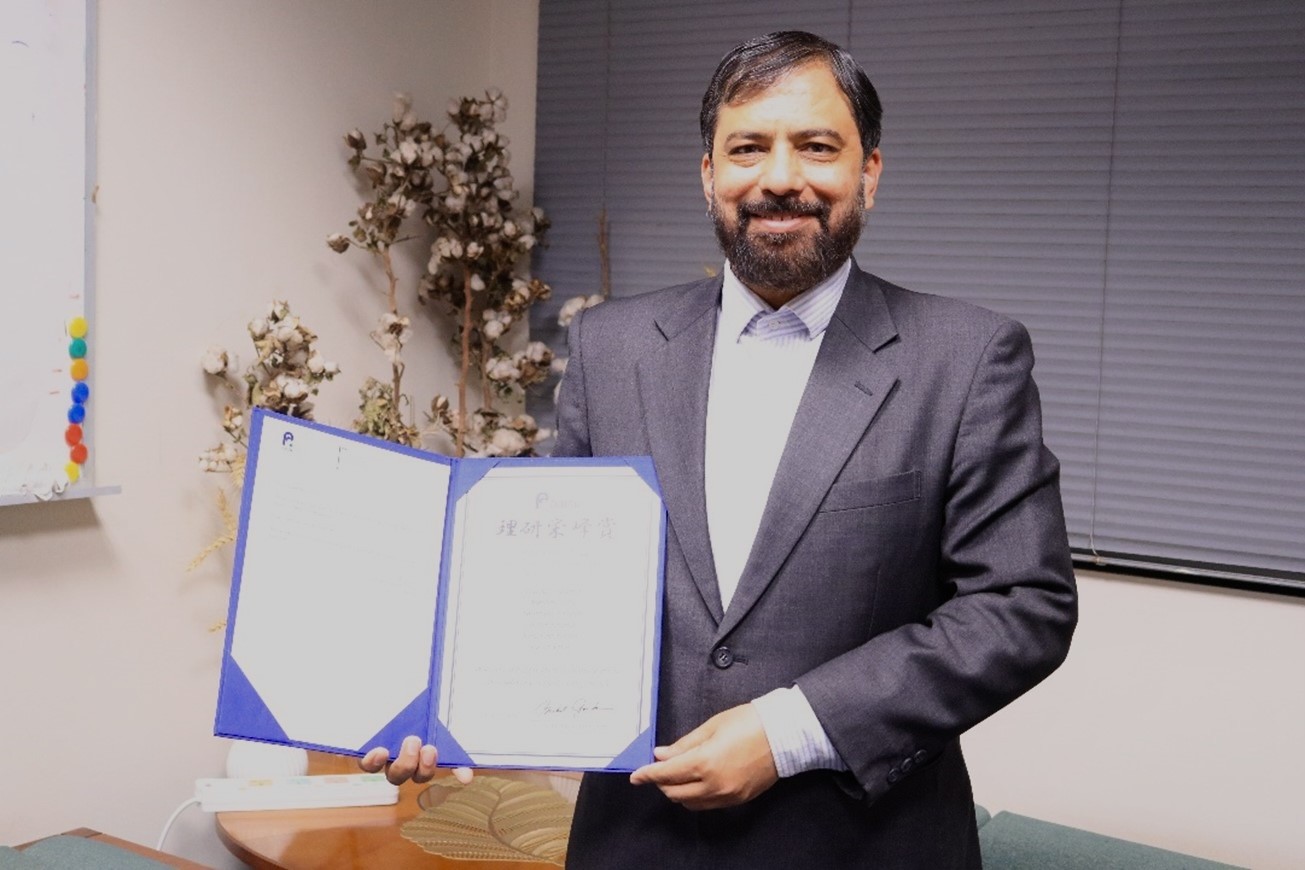
Dr Khurram Bashir, an Associate Professor in the Department of Life Sciences at Syed Babar Ali School of Science and Engineering (SBASSE) and a visiting researcher at RIKEN, spearheaded research with far-reaching implications for agriculture and sustainable crop production. Ethanol treatment significantly improves crops’ ability to withstand drought stress by regulating water evaporation from plants.
While Dr Khurram primarily focused on drought resistance, his fellow researchers at RIKEN concentrated on heat and salt tolerance. Their collaborative efforts culminated in a publication in 2022, with Dr Khurram serving as the lead author, for which they now hold a patent. Dr Khurram extends his gratitude to his colleagues at SBASSE, the Plant Genomic Network Research Team at RIKEN and his mentor, Dr Motoaki Seki, for their invaluable support and insights throughout his research journey.
From Lab to the Fields
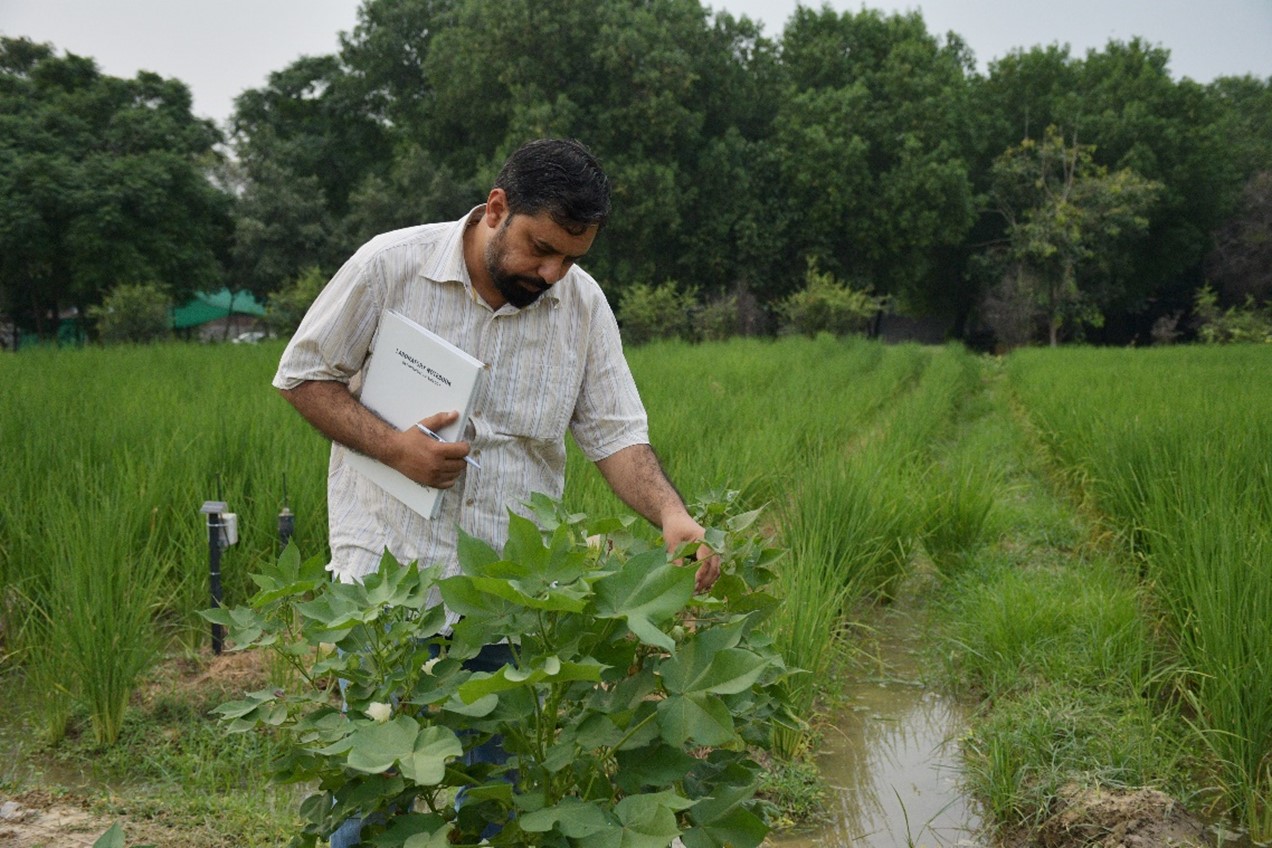
Dr Khurram has utilised the agricultural land at LUMS to test his research on enhancing drought resistance mainly in cotton and rice crops through ethanol treatment. In parallel, this innovative approach is being tested internationally across various climatic conditions in Europe, South, and North America, to evaluate its effectiveness in diverse environments. Collaborations with agricultural industries are also underway to scale up the research and contribute to the global crop production.
Reflecting on his motivations, Dr Khurram shares, “My primary focus is on pure science; however, it's fascinating when such science has the potential to transition to applied research. It's incredibly rewarding to see work that is driven purely by scientific curiosity eventually have the potential to serve a greater purpose."
It is this unique blend of curiosity-driven research and its practical application in enhancing global agricultural practices that has earned Dr Khurram Bashir and his fellow researchers the prestigious RIKEN EIHO Award.
RIKEN, Japan's largest comprehensive research institution renowned for high-quality research in a diverse range of…
Seminars and Conferences
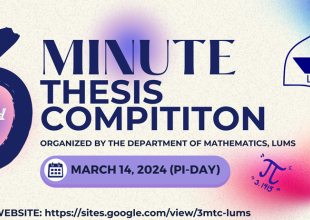
Pi Day is celebrated on March 14th (3/14) around the world. Pi (Greek letter “π”) is the symbol used in mathematics to represent a constant — the ratio of the circumference of a circle to its diameter — which is approximately 3.14159. Pi Day is an annual opportunity for math enthusiasts to recite the infinite digits of Pi, talk to their friends about math, and to eat pie.
The department of Mathematics LUMS is organizing the third "3-minute thesis competition (math)" on the 24th of April as part of the (approximate) Pi Day celebrations. The competition is for research-based masters and doctoral students who are working in any area that involves math and / or its applications. The winners of the competition will be decided by the jury.
What it is about
- An 80,000-word thesis takes 9 hours to present. Can you present your thesis in 3 minutes, and that too with just 1 slide?
- Competitors use one static slide to explain the breadth and significance of their graduate research to a non-specialist audience within 3 minutes.
Eligibility
Masters’ or Doctoral students pursuing research in any area that involves math and/or its applications. Students from all over Pakistan are welcome.
Benefits
1. It helps you develop communication and public speaking skills.
2. It enables you to communicate complicated research ideas in simple terms.
3. As mathematics frequently interact and work with non-mathematicians in industry, this competition will help you to communicate with a non-technical audience.
4. It will enhance your CV and the profile of your work.
Rules
1. Only a single, static PowerPoint slide is permitted.
2. No slide transitions, animations or movement of any kind are allowed. The slide is to be presented from the beginning of the oration.
3. No additional electronic media (e.g., sound and video files) are permitted.
4. No additional props (e.g., costumes, musical instruments, laboratory equipment) are permitted.
5. Presentations are limited to a maximum of 3 minutes. Participants that exceed 3 minutes will be disqualified.
6. Presentations are to be in spoken word (i.e., no poems, raps or songs).
PARTICIPATION IS FREE OF COST
This is a virtual event and zoom link will be shared with registered participants. For participation as a speaker or as an attendee, please fill registration form. The link is given below.
Pi Day is celebrated on March 14th (3/14) around the world. Pi (Greek letter “π”) is the symbol used in mathematics to represent a constant — the ratio of the circumference of a circle to its diameter — which is approximately 3.14159. Pi Day is…
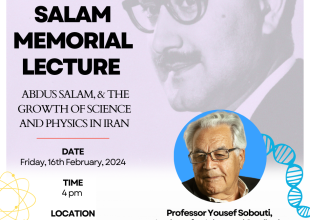
Professor Yousef Sobouti is a prominent astrophysicist and educator known for his significant contributions to basic sciences in Iran and the developing world. As the founder of the Institute for Advanced Sciences in Basic Sciences and a collaborator with institutions like the Abdus Salam ICTP and The World Academy of Sciences, Prof. Sobouti has played a crucial role in advancing scientific education and research, and the nurturing of scientific talent in the region.
Professor Yousef Sobouti is a prominent astrophysicist and educator known for his significant contributions to basic sciences in Iran and the developing world. As the founder of the Institute for Advanced Sciences in…
Public Lecture Series
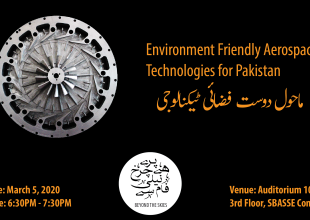
Biography:
Dr. Sarah Qureshi is working on contrail-free aero engines as the CEO and founding director of Aero Engine Craft (Pvt) Ltd. She is also a visiting fellow at the School of Aerospace at Cranfield University. Sarah has a PhD degree in Aerospace Engineering from Cranfield University, UK. Her area of specialization is Propulsion whereby she worked on the development of a contrail-free aero-engine that has been derived from a novel patented technology. Sarah was actively involved with the invented technical outcome of the engine. The innovated engine has a tremendous potential in bringing about an environmental revolution in the context of aviation.
Dr. Sarah Qureshi , along with the inventor of technology Mr. Masood Latif Qureshi has now set up Aero Engine Craft (Private) Limited as Pakistan's first commercial engine and aircraft company to convert this patented technology into a full scale commercial application ready to be used by modern civil transport aircraft. During her PhD, Sarah supervised a number of MSc. students for their research projects on Jet Engine Technology. Prior to this, Sarah completed her master’s degree in the field of Aerospace Dynamics from Cranfield University, UK. Her research involved the design of a trajectory following controller inclusive of stability augmentation, attitude control system and outer loop autopilot for unmanned aircraft (UAVs) flying in close formation for the purpose of air to air refuelling. After graduating as a Mechanical Engineer from Pakistan, Sarah gained extensive experience of working in the local automotive and engineering industry.
Her bachelors' research project involved the development of a measurement and data logging system for the in-cylinder temperature and combustion of an internal combustion engine. Her prime technical interests are focused upon engine technology and aircraft design. Sarah holds a Private Pilot License (PPL) with 70 hours of Flying Experience. She has also learned acrobatic flying and several flight manoeuvres while at Cranfield.
Biography:
Dr. Sarah Qureshi is working on contrail-free aero engines as the CEO and founding director of Aero Engine Craft (Pvt) Ltd. She is also a visiting fellow at the School of Aerospace at Cranfield University. Sarah has a PhD degree in Aerospace Engineering from…
سائنس اور ٹیکنالوجی کی کہانیاں
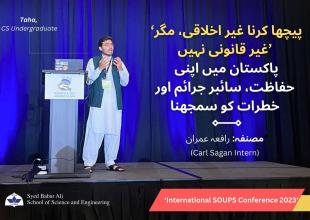
یہ تحقیقاتی مقالہ نوجوانوں کے سائبر جرائم سے متعلق خیالات اور تجربات پر روشنی ڈالتا ہے۔ یہ تحقیق لمز اور سارلینڈ یونیورسٹی کی خصوصی معاونت کے ساتھ، ڈاکٹر مریم مصطفی کی رہنمائی میں، طلبا محققین طہٰ اور آفاق اشرف نے سر انجام دی۔ جو سائبر جرم کو ایک غیر مشرقی طرز سے دیکھتے ہوئے قیمتی بصیرت فراہم کرتی ہے۔
اس تحقیق کا مقصد یہ تلاش کرنا تھا کہ پاکستان میں نوجوان سائبر جرم کو کس نظر سے دیکھتے ہیں ،اپنے آپ کو ان سے کیسے بچاتے ہیں، اور انہیں یہ جرائم رپورٹ کرنے میں کن رکاوٹوں کا سامنا کرنا پڑتا ہے۔ ریپرٹری گرڈ ٹیکنیک آر جی ٹی انٹرویوز اور نیم ساختہ معیاری انٹرویوز کے مجموعے کے ذریعے اس تحقیق کے دلچسپ نتائج سامنے آئے۔
اس تحقیق کا ایک اہم پہلو جنسی امتیازات کے تصورات میں فرق ہے۔ مثال کے طور پر، جہاں مرد حضرات پیچھا کرنے کو ایک قدرے معمولی جرم سمجھتے ہیں وہاں خواتین کے لیے یہ باعث تشویش اور انتہائی اہم مسئلہ ہے جو ان کی معاشرتی زندگی پر اثر انداز ہو سکتا ہے۔ اسی طرح مالی فریب مرد حضرات کے لیے انتہائی سنگین جرم ہے کیونکہ پاکستانی گھرانوں میں اکثر آمدن کی ذمہ داری ان کی ہوتی ہے۔
یہ تحقیق موجودہ سوشل میڈیا پلیٹ فارمز پر لگائے جانے والے پرائیویسی انتظامات کی ناقصی پر بھی انگلی اٹھاتی ہے۔ مختلف پلیٹ فارمز کو خاص بنانے اور پروفائلز کو نجی بنانے کے باوجود شرکت کنندگان کو غیر مطلوبہ رابطہ اور جعلی پروفائلز جیسے سائبر جرائم کا سامنا کرنا پڑتا ہے۔ تحقیق کاروں نے یہ بھی دریافت کیا کہ رپورٹ کرنے کے طریقے اکثر بے اثر ہوتے ہیں اور شرکت کنندگان کو کئی رکاوٹوں کا سامنا کرنا پڑتا ہے جن میں والدین کو شامل کرنے کی ہچکچاہٹ، متاثرہ شخص کی ملامت اور رپورٹنگ پلیٹ فارم کے بارے میں آگاہی کی کمی شامل ہیں۔
تجاویز کے حوالے سے تحقیق کاروں نے سوشل میڈیا پلیٹ فارمز پر سیاق و سباق پر مبنی خصوصیات ہونے کی وکالت کی ہے۔ وہ خصوصیات جیسے کہ رابطہ خاص بنانے کے عمل، ڈیفالٹ پرائیویسی سیٹنگز، شفاف رپورٹنگ ٹائم لائنز، اور عام دھوکہ دہی کے بارے میں نوٹیفکیشنز کو فروغ دینے کی تجویز دیتے ہیں تاکہ صارفین کی حفاظت کو بہتر بنایا جا سکے۔
اس کے ساتھ ساتھ، طہٰ اور ساتھیوں کی یہ تحقیق، ایس او یو پی ایس۲۰۲۳ کانفرنس میں بھی پیش کی گئی جہاں اسے آئی اے پی پی ایس او یو پی ایس پرائیویسی ایوارڈ سے نوازا گیا۔یہ کامیابی ثقافتی اور سیاق و سباق سے متعلق عوامل کی اہمیت کا اندازہ دلاتی ہے۔ روایتی لباس زیب تن کرنے سے طہٰ کا مقصد جامع ٹیکنالوجی ڈیزائن کی ضرورت کے بارے میں آگاہی دلانا تھا جو محروم کمیونٹیز کے نظریہ اور ضروریات کو بھی سمجھ سکیں۔

مجموعی طور پر، یہ تحقیق آن لائن تحفظ کے شعبے میں مغربی تحقیق اور پاکستان میں ہونے والے نوجوانوں کے مسائل کی اصلیت کے درمیان موجود فاصلے کو مدنظررکھتے ہوئے قیمتی دلائل فراہم کرتی ہے۔ یہ تحقیق ٹیکنالوجی کے ڈیزائن اور پالیسی بنانے میں ثقافتی اور سماجی تناظر کی اہمیت کو اجاگر کرتی ہے۔
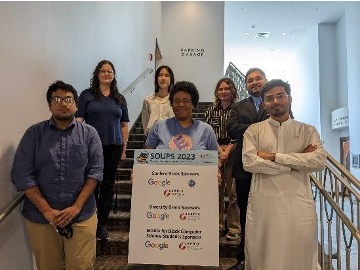
یہ تحقیقاتی مقالہ نوجوانوں کے سائبر جرائم سے متعلق خیالات اور تجربات پر روشنی ڈالتا ہے۔ یہ تحقیق لمز اور سارلینڈ یونیورسٹی کی خصوصی معاونت کے ساتھ، ڈاکٹر مریم مصطفی کی…







